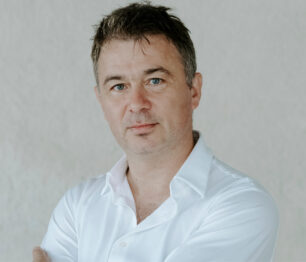Contemporary historiography divides Beethoven’s creative life into three successive eras, a coherent perception of the trajectory of a creator for whom Pierre Boulez felt a constant, secret admiration. The Beethoven and Boulez confrontation is a commonplace of modernity throughout the three post-war decades. It reveals part of the singularity of the three moments in Pierre Boulez’s own musical life: the integration of legacies after the French Liberation, the proliferation of utopias in the 1950s, and the conductor’s pragmatic return to the practice of composition.
The later Boulez, like the later Beethoven, was not the artist of destruction, but of reappraisal of what he had learned in his youth. Beethoven’s last works owe their organic originality to a rethinking of eighteenth-century forms and writing principles: the French overture, invention, chorale, fugue, theme and variations… Similarly, from Répons to Dérive 2, Boulez reconsidered the first acquisitions he made between 1942 and 1948, from the occupied province of Lyon to liberated Paris.
Pierre Boulez’s training was not limited to Olivier Messiaen, whose classes he attended for six months between 1944 and 1945. Boulez identified Messiaen as his initiator to rhythmic life. But at the age of twenty, Boulez was looking elsewhere and everywhere: during the German Occupation, towards Honegger’s La Danse des Morts, Stravinsky’s Chant du Rossignol, Schoenberg’s Herzgewächse, Szymanowski’s Mythes, Messiaen’s Thème et variations; after the Liberation, towards non-European music, Wyschnegradsky’s microtonality and the ondes Martenot, musique concrète, serialism learned from Leibowitz, as well as the poems of René Char and Antonin Artaud.
Composed in 1946, the Sonatine pour flûte et piano is a paroxysmal milestone in Boulez’s first creative period, a maximal synthesis of legacies, desired for its own sake and breaking away from Messiaen and Jolivet’s incantation. The setting to music of delirium is a primary aspect of Pierre Boulez’s poetics. But the Boulezian cry is not a scream. Noted, articulated, thought out in relation to voice and song, it is ever present from the earliest works composed on poems by Rilke and Baudelaire, right through to E. E. Cummings.The cry is this metaphoric form of the voice in literature that made Boulez reconsider his initial poetic sensibility. Like his First Piano Sonata, the Sonatine took a long time to develop. Successive manuscripts of both works recall the diary of a musician paving the construction of language, the maturation of grammar and the viability of utopias. The flute of the Sonatine has the inflection of a song from Viennese expressionism. The Sonatine looks to Schoenberg – the exacerbation of the third piece in his Drei Klavierstücke Op. 11 and the shape of his Chamber Symphony No.1. Unifying the part and the whole: Boulez does not see Schoenberg’s grammar as creative constraint. To him, it promises control and gushing.
At the turn of the 1980s, Boulez turned his conducting skills to composition. He had conducted Bartók, Stravinsky, Ravel and Schoenberg, but his aim was not simply to achieve a landmark performance. Boulez assessed the sonic results of his conducting work enriched by the memory of his first discoveries treasured in a composer’s ear, and thus reexamined the milestones of his formative years. Boulez, an amnesiac? To the contrary, memory is a primary component of his personality. The trace of first impressions lies intact.
The Dérive series takes place at the heart of the composer’s last decades. Dérive 1 interprets the instrumental model of Schoenberg’s Pierrot lunaire and tests the phenomena of resonance within a timeline freed from Western dialectics, a sensibility initiated through contact with distant music after World War II. Boulez always wanted to tackle paradoxes. In 1946, in his Sonatine, he confronted Messiaen and the Second Viennese School. Almost half a century later, Répons, sur Incises and Dérive 2 revived the rhetoric of his Messiaen’s incantatory poetics through the concrete exercise of the conducting practice. The later influences – those of Carter, Ligeti and Nancarrow – happened within the earlier legacies and their limits. The conductor warned the composer of the potential of successive grammars.
Pierre Boulez’s career is an example of a constant desire to assimilate new influences. Boulez filtered percepts in the light of his own experience. Dérive 2 is a pared-down work, without electronics and an apparently traditional approach to timbre. He composed without pedals. Glorifying amnesia? When you hear Sonatine next to the Dérive series, you get a sense of that condensed trajectory. Pierre Boulez was too faithful to his memories to merge them into mere nostalgia. His memory marks a sealed moment, the place of endless transubstantiation. Pierre Boulez is, in this sense, a constant model of a musician and creator.
François Meïmoun









